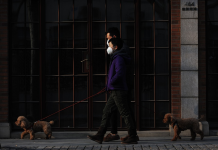
Raccoons are night-time animals that are really smart about where they sleep. They pick spots that keep them safe and near food. They can sleep in tree holes or even in places like attics or empty cars.
These animals are also really good at switching sleeping spots. They do this when they have babies or when the weather changes.
Key Takeaways
- Raccoons display diverse sleeping habits based on their environment.
- Common dens include tree holes, hollow logs, and human structures.
- Raccoons often change their dens, exhibiting opportunistic behavior.
- Evolved nocturnal behaviors enable them to avoid predators and competition.
- Maternal raccoons prefer elevated tree dens for raising young.
Natural Habitats: Trees and Forests
Raccoons do well in places like woods and forests. They use tree holes and hollow logs to live safely. This way, they make the most of their home for protection.
Tree Holes and Hollow Logs
Tree holes and hollow logs are perfect homes for raccoons. They offer safety from predators and bad weather. Raccoons love these spots because they’re great climbers. They find both safety and a quiet place to be.
Forest Dens
In forests, raccoons find different places to call home. These dens are safe and near many food sources. They eat water animals, fruits, and plants. This diet fits well with where they live, helping them do well.
Urban and Suburban Environments
Raccoons are thriving in cities and neighborhoods. They adapt well, thanks to their varied diet. They like to eat our trash and veggies from gardens.
In cities, raccoons use storm drains to move around. They’re smart at finding food in trash cans. This shows how clever they are at solving problems to survive.

In suburbs, raccoons go after garden veggies and trash. Havahart® offers tips to keep them away. They suggest locking trash up tight and blocking their way into homes.
Here’s a look at how raccoon behavior differs in cities versus suburbs:
| Aspect | Urban | Suburban |
|---|---|---|
| Shelter | Storm drains, sewers | Garden sheds, attics |
| Food Sources | Garbage, dumpsters | Garden produce, compost |
| Activity Level | High due to abundance of food | Moderate, influenced by seasonal changes |
| Human Interaction | Frequent | Occasional |
Both city and suburb raccoons show how smart they are. Their choices in homes and food are quite clever.
Raccoon Sleeping Patterns
Raccoons sleep mostly during the day because they are active at night. They choose secure, hidden spots for resting. Knowing how they change behavior with the seasons helps us understand how they survive.
Nocturnal Nature
At night, raccoons are very busy looking for food. This raccoon nocturnal activities helps them avoid daytime predators. They rest in daylight to save energy and move around more easily at night.
Seasonal Changes and Hibernation Myths
Raccoons don’t truly hibernate. In cold months, they just sleep more but still wake to find food when it’s not too cold. Female raccoons stay close to their babies in winter. This helps keep their young safe.
Males roam more to find food and protect their area. This shows how different their winter habits are.

| Factors | Impact on Raccoon Behavior |
|---|---|
| Nocturnal Activities | Reduce competition and threats from diurnal predators. |
| Wildlife Sleep Cycles | Daytime rest and nighttime foraging optimize energy use. |
| Hibernation Behavior | Engage in lighter torpor during winter, waking on mild days to scavenge. |
Where Do Racoons Sleep in Changing Climates
Raccoons adjust well to different weather, making them tough. They change where they sleep and what they eat to survive. In warm weather, raccoons move more and eat more, using available food.
But in cold or bad weather, they find cozy, safe places to stay. They might hide in forests or places built by people. This shows how well raccoons can handle changing climates, living in many different areas.
Raccoons eat a lot of different things, which helps them stay alive. They can eat water creatures, crops, or trash. This lets them find food even when the weather affects other animals. Their smart sleep and eating habits help raccoons deal with climate changes. They are really good at adapting to new environments.











































